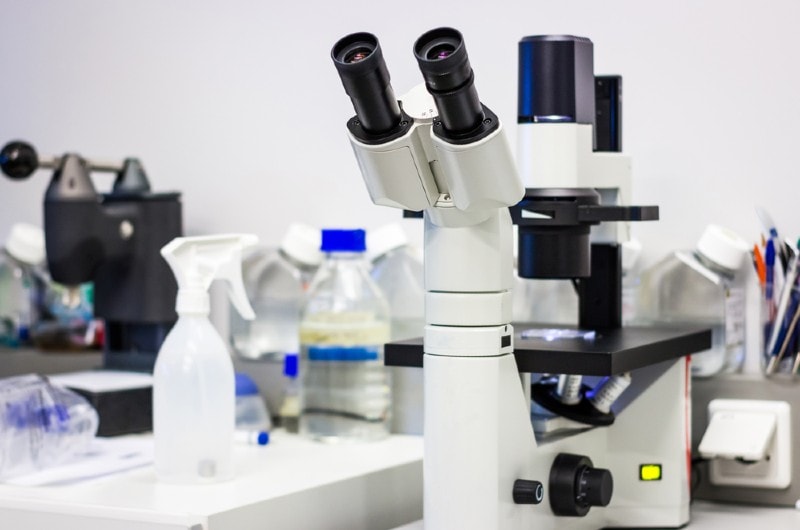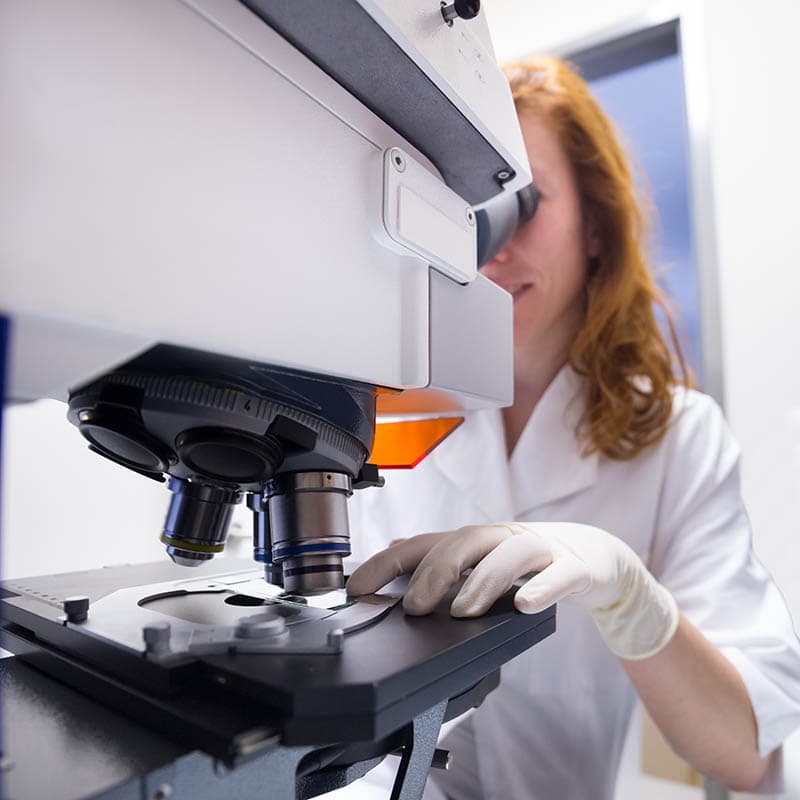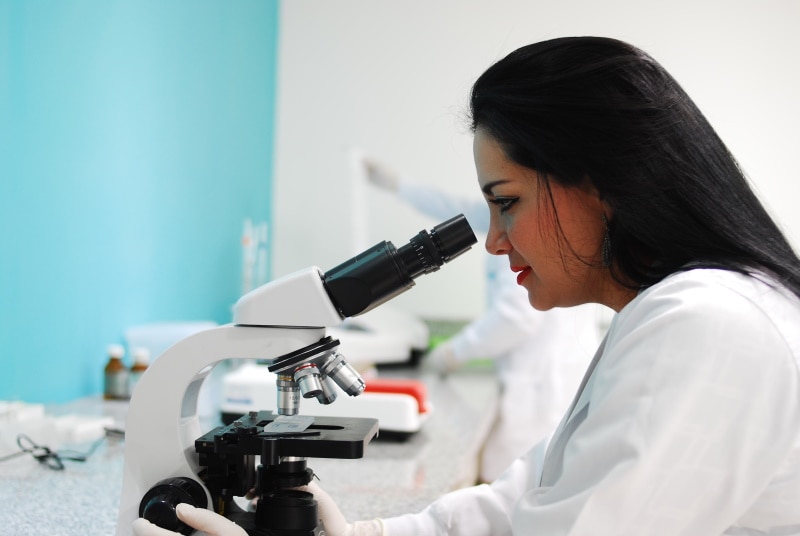What Are Microscopes Used for In Science? 8 Fascinating Uses!
Last Updated on

The microscope is a critical instrument in many science fields. It allows scientists to see microscopic objects up close. There are a variety of different microscope types, each one having its own benefits and drawbacks. Likewise, the type of microscope used often determines what it is used for.
What are some examples of how microscopes are used in science? Below are the eight most common uses of microscopes in science.

The 8 Common Ways Microscopes Are Used in Science:
1. Education

Scientists aren’t born scientists. Instead, they have to undergo a lot of education. Microscopes play a huge role in that education. Nearly all fields of science use microscopes in the education phase. The microscopes allow the students to see controlled specimens up close so that they can learn different facts about their field.
For example, medical scientists use microscopes in the education phase to look at cells up close. Gemologists and geologists, in contrast, use microscopes to learn what the crystal structure looks like in certain rocks.
2. Viewing Atomic Structure
One of the most important uses of the microscope is viewing the atomic structure. The atomic structure refers to how individual atoms are lined up to create the object being observed. By looking at atomic structures, we can learn more about how our world is made-up and make advanced technology in response.
3. Medical Science

Medical Sciences rely heavily on microscopes. Many diseases need to be seen on the cellular level, which is impossible without the aid of a microscope. With microscopes, medical scientists can learn more about cancer and other similar diseases so they can hopefully find a treatment.
4. Tissue Analysis
Tissue is made up of millions of little cells. Many different scientists need to look at the tissue cells for their jobs. For example, forensic scientists, histologists, and medical scientists often have to look at tissues under a microscope. By looking at the tissue up close, they can determine if any diseases are present or if there are any abnormalities in the sample.
5. Viewing Forensic Evidence

Forensic evidence relies heavily on the use of microscopes. Often, forensic evidence is incredibly small, but it can be used to lock up bad people. Many forensic scientists use microscopes to look at striations in bullets, fabric fiber, hair samples, and other items that can be used as evidence.
6. Studying Gems
Rocks may seem simple up close, but they’re made up of interconnecting networks of atoms. Gemologists, geologists, and other people who spend their lives studying rocks need microscopes to see the gems and rocks up close. Microscopes allow these scientists to see the crystal structures of the rocks.
7. Studying Protein in a Cell
All our cells contain proteins. Proteins are smaller than the cell, making them impossible to see with the naked eye. A range of scientists will use the microscope to see the protein within the cell and learn how these proteins function. By learning the function of proteins, we can better understand how our body works.

8. Viewing an Ecosystem
Microscopes are often used to see an ecosystem up close. Field biologists often use microscopes for this purpose. A specimen from a particular ecosystem will be selected and put under the microscope. For example, a small drop of water from a larger stream works. When under the microscope, the scientists can see what organisms are present to see what makes a healthy ecosystem in that area.
What Microscopes Are Used by Scientists?

There are five main types of microscopes today: the simple microscope, compound light microscope, stereo microscope, scanning electron microscope, and transmission electron microscope.
All these microscopes are used in science for some purposes. Compound light microscopes are normally used for biology and medical school, while scanning electron microscopes are often used for medical science, forensic investigation, and soil and rock studies.

Final Thoughts
As you can see, microscopes are used in many ways in science. Although these are eight common uses of microscopes in science, they are far from being the only uses. For this reason, microscopes are an invaluable tool that helps us advance our world and our understanding of it.
Featured Image Credit: Catalin Rusnac, Shutterstock
About the Author Robert Sparks
Robert’s obsession with all things optical started early in life, when his optician father would bring home prototypes for Robert to play with. Nowadays, Robert is dedicated to helping others find the right optics for their needs. His hobbies include astronomy, astrophysics, and model building. Originally from Newark, NJ, he resides in Santa Fe, New Mexico, where the nighttime skies are filled with glittering stars.
Related Articles:
Binocular Magnification Chart: Numbers & Distances Compared
What Is the Best Binocular Magnification for Hunting? Optical Features Explained
How to Clean a Refractor Telescope: Step-by-Step Guide
How to Clean a Telescope Eyepiece: Step-by-Step Guide
How to Clean a Rifle Scope: 8 Expert Tips
Monocular vs Telescope: Differences Explained (With Pictures)
What Is a Monocular Used For? 8 Common Functions
How to Clean a Telescope Mirror: 8 Expert Tips
